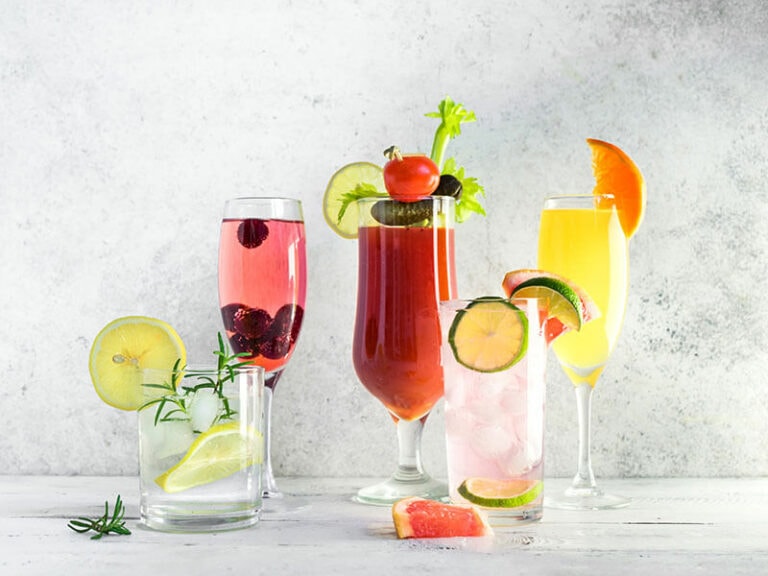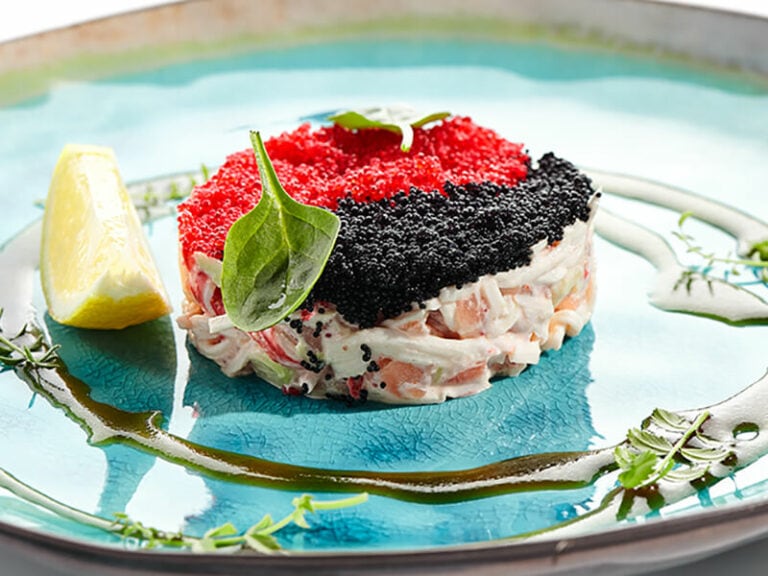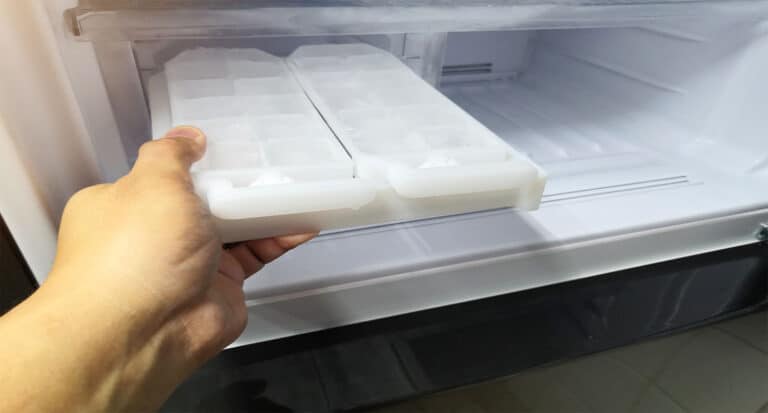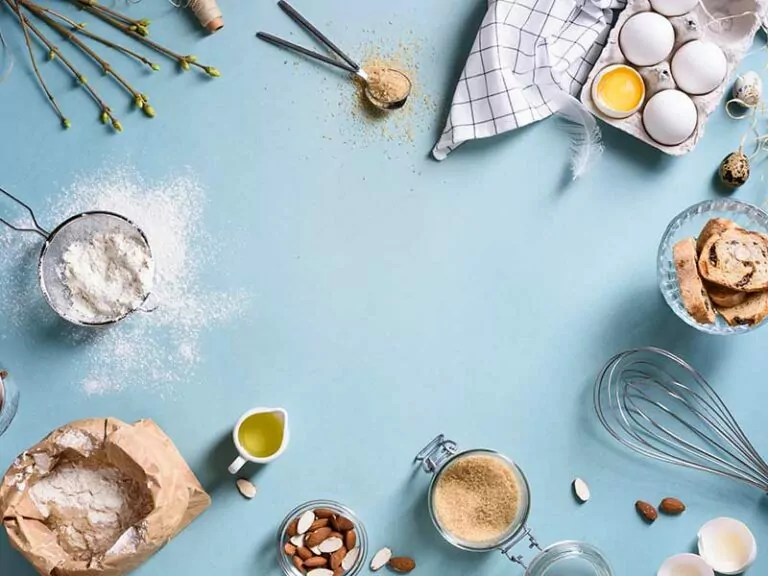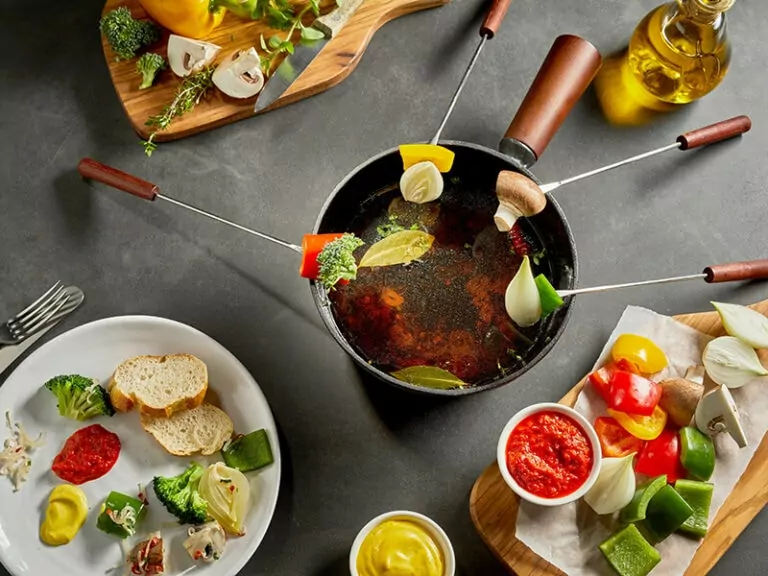Pickling vs. fermenting? People have always wondered about the result of this competition between the two most basic food preservation methods. They’ve appeared in various recipes, but only a few know about them enough to differentiate them.
That’s why I wrote this article! Aside from detailed information about these two, I’ve included a thorough explanation about using them to preserve different foods. After reading this post, you can pickle or ferment any food you want.
Is that enough to get your attention? If yes, don’t stop here and start your journey about pickling and fermenting now!
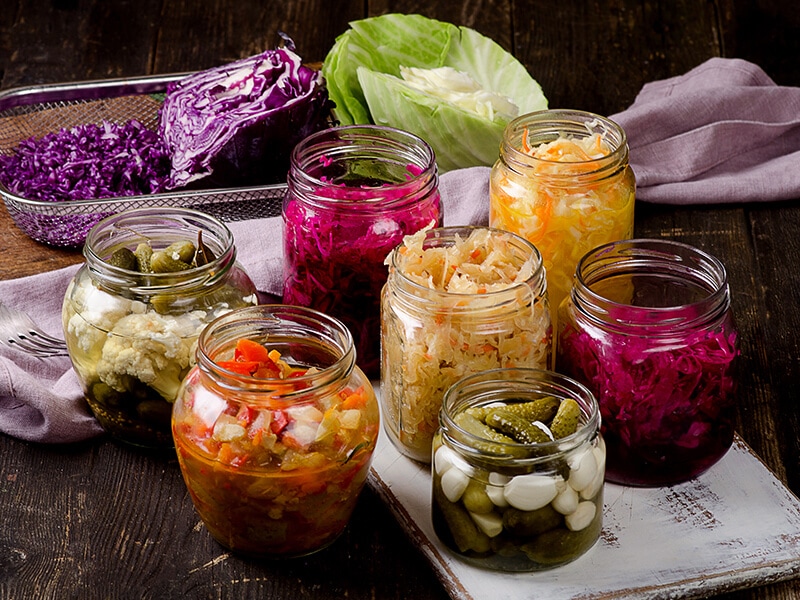
What Does Pickling Mean?
Welcome to the wonderland of pickled food! If you are a fan of pickles, this information in this part will amuse you to no end.
Definition
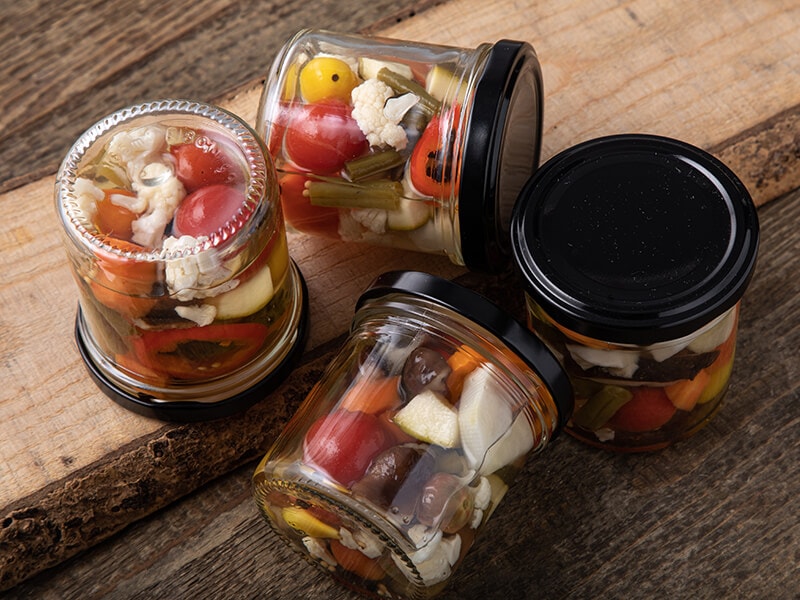
Pickling is one of the oldest methods to preserve vegetables or other foods for a long time at room temperature. It was born decades ago when people didn’t have a fridge. As a result, you don’t need to refrigerate pickled foods.
To make some pickles, you need to submerge foods in an acidic brine to prevent enzymes and microorganisms from growing and working. Different cuisines will have various pickling brines, but basically, people make it with water, vinegar, pickling salt, and other seasonings. (1)
Different Types Of Picklings
Now you know the general definition of pickling, you may wonder how many types of picking there are. So, here are some of the most popular variations.
Dill Pickle
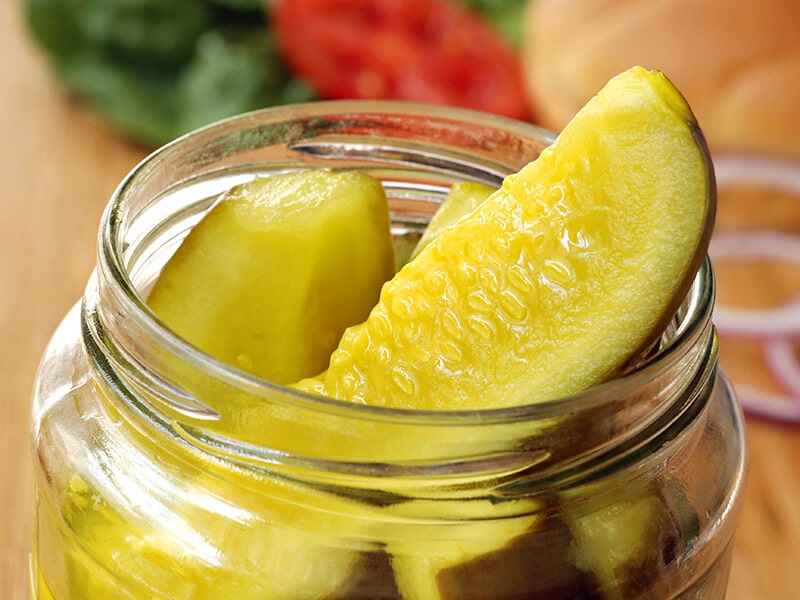
This type is undoubtedly the most well-known. When people talk about pickles, they mostly mean dill pickles. It refers to the pickle using dill weed in the brine. And don’t mistake these pickles for regular cucumbers.
With its robust, herbal flavor, dill pickle is a fitting partner for burgers, hot dogs, sandwiches, etc. But some stores also sell it as a stand-alone snack.
Full-Sour Pickle
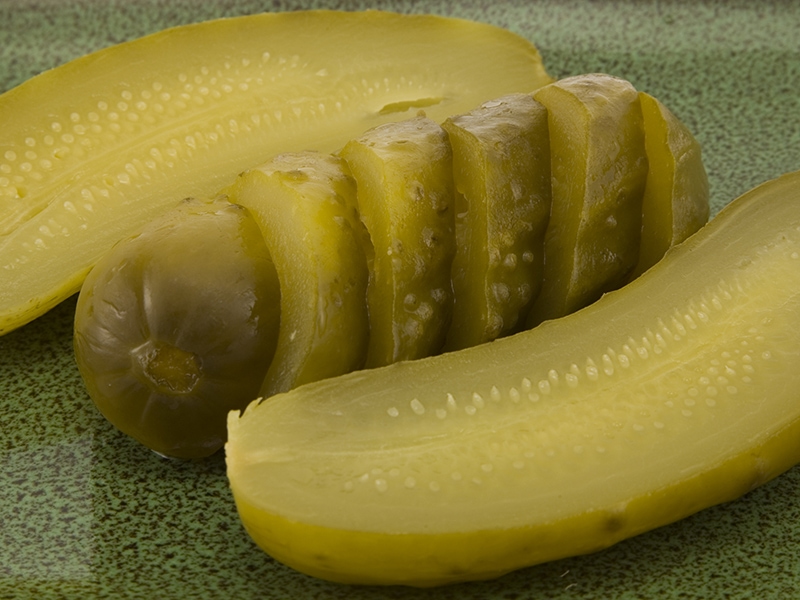
Pickles are always sour, but these sour versions are tangier than others. But despite its name, this variety doesn’t use vinegar for its brine. So you’ll entirely depend on the salt, water, and time for the flavor.
After 3 or 4 months of pickling, your pickles are ready to enjoy. Many also prefer using full-sour pickles to make tangy cocktails.
Half-Sour Pickle
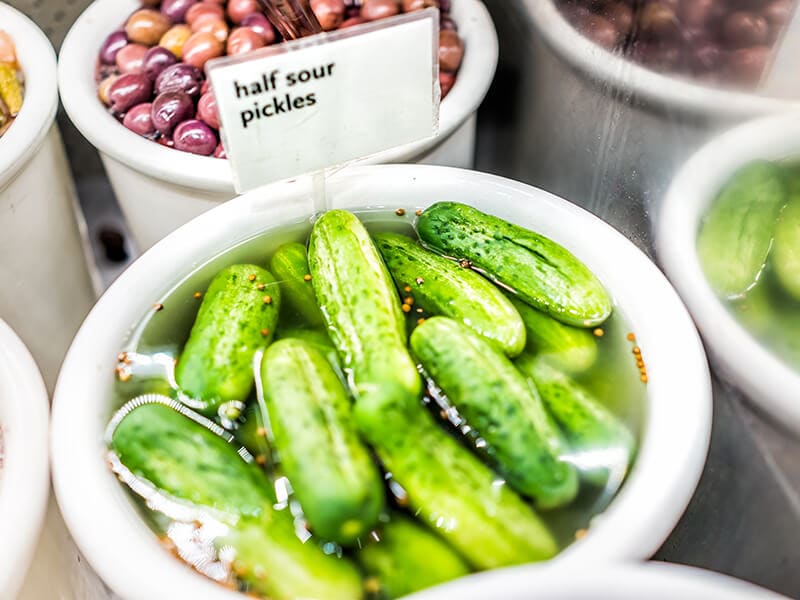
As its name implies, half-sour pickles experience the same process as the full-sour version but for a shorter time. People usually only pickle them for 2 months at most, resulting in a milder flavor.
Half-sour pickles are a breeze to make. Check this guide out!
Sweet Pickle
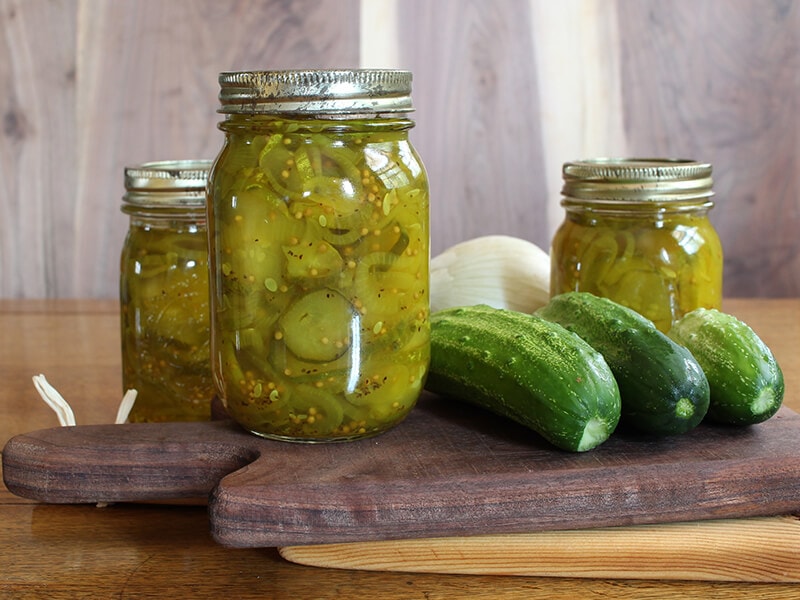
You may feel slightly bewildered at this option. As I’ve said above, pickles are usually tangy, but this one is for people with a sweet tooth.
Aside from the usual ingredients, you can find sugar in its brine. The amount differs among other sweet variations. For example, candied pickles will have the highest sugar content and thus taste the sweetest.
You can use these pickles the same way as sour ones: Add them to sandwiches or eat them as a snack. Stuffing them into olives is also an excellent way to enjoy their sweet-tangy flavor.
All You Need About Fermenting
It’s time to learn some information about pickling’s competitor: fermenting. You always see this term in bakeries, but what does it really mean? Let’s find out!
Definition
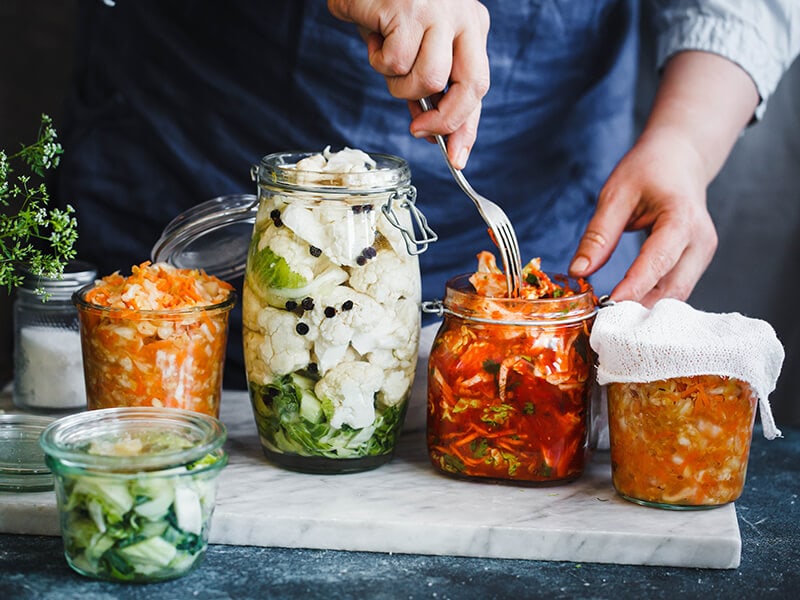
First, fermentation was born way sooner than pickling. The earliest proof points to the appearance of ancient beer 13 thousand years ago. Nowadays, fermentation is used for many daily products: bread, yogurt, beer, wine, etc.
Fermentation will break down the starches and sugars in your foods and convert them into lactic acid. This acid is why fermented foods are somewhat sour and acidic. (2)
Different Kinds Of Fermentation
Obviously, fermentation doesn’t come in one variation. While following the basic process, each type has its own characteristics and uses.
Lactic Acid Fermentation (Lacto- Fermentation)
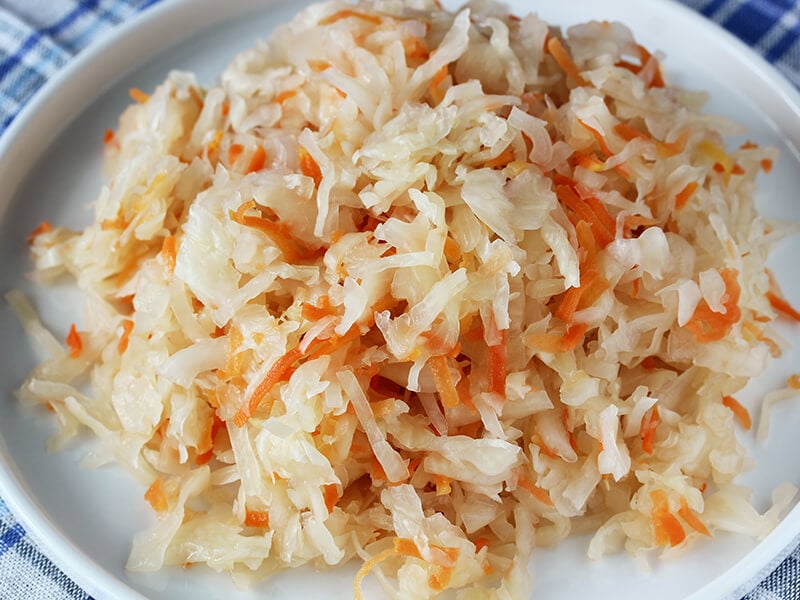
This process is used in almost any fermented food: kimchis, yogurts, sauerkrauts, sourdoughs, etc. It doesn’t require many ingredients; only salt and water are enough to break down the starches and sugars.
Once you know about lactic acid fermentation, you can easily make fermented foods yourself.
Ethanol Fermentation (Alcohol Fermentation)
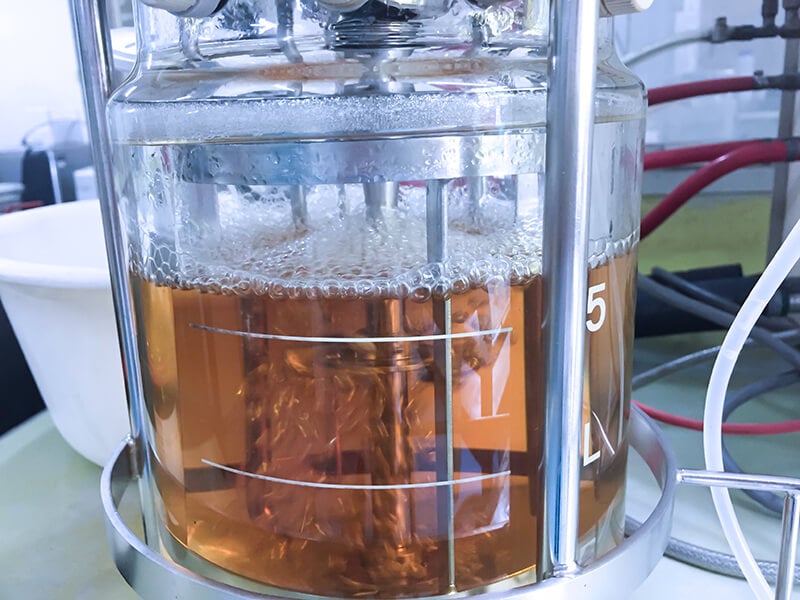
You may have known which foods or drinks need this process from its name. Yes, the answer is beer, wine, and spirit. People also use this method to make sourdough rise before moving to lactic acid fermentation.
Acetic Acid Fermentation
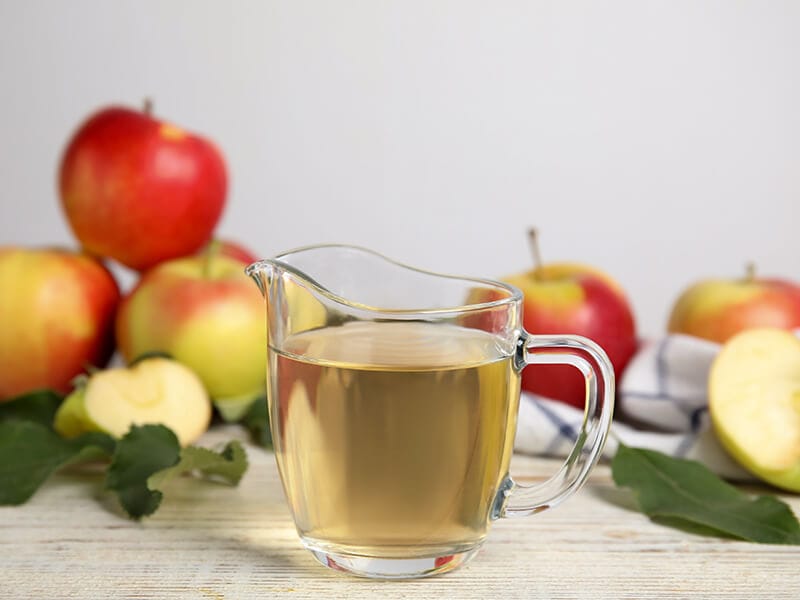
There are still some arguments about whether acetic acid fermentation should be a separate category or included in the ethanol one. Basically, it refers to the process of transferring your wine into vinegar.
A Thorough Competition Between Pickling And Fermenting
I won’t let you wait any longer; here comes the main part! You will learn all the similarities and differences between these two preserving methods and how to use them.
Similarities
After reading short introductions about pickling and fermenting, you may have known a bit about what they have in common. But this part will show you a closer look at their resemblance.
Both Are Used To Preserve Food
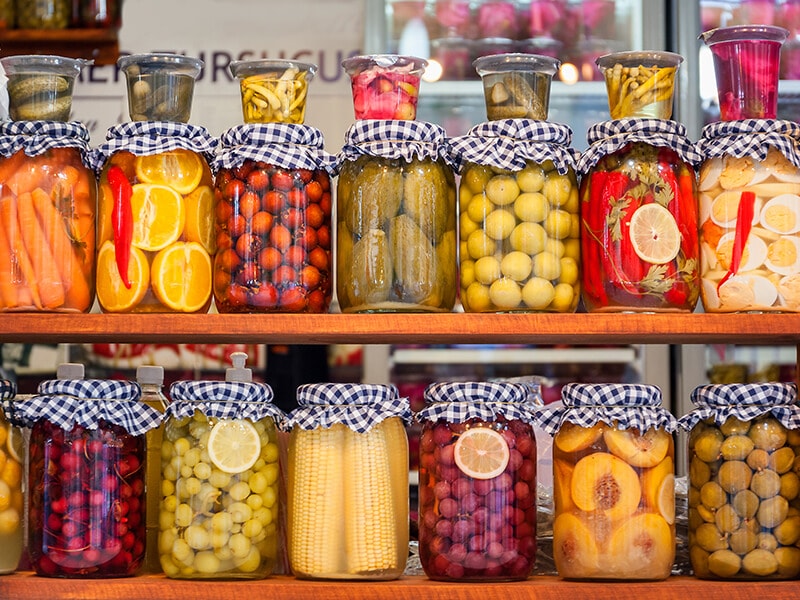
In the past, when people didn’t have fridges or freezers, pickling and fermenting were two familiar ways to preserve foods. While the required time is different, you can trust these two to protect your ingredients for a long time.
Also, pickling and fermenting require no air contact since air exposure can lead to bacteria, mold, and fungi growth and ruin the whole batch.
Both Change The Food’s Flavor And Texture
Although the results from both sides are not identical, pickled and fermented foods often have a sour and acidic taste. The sourness of pickles comes from the brine, whereas the tangy flavor you taste in fermented foods is from the lactic acid.
Both Use Brine
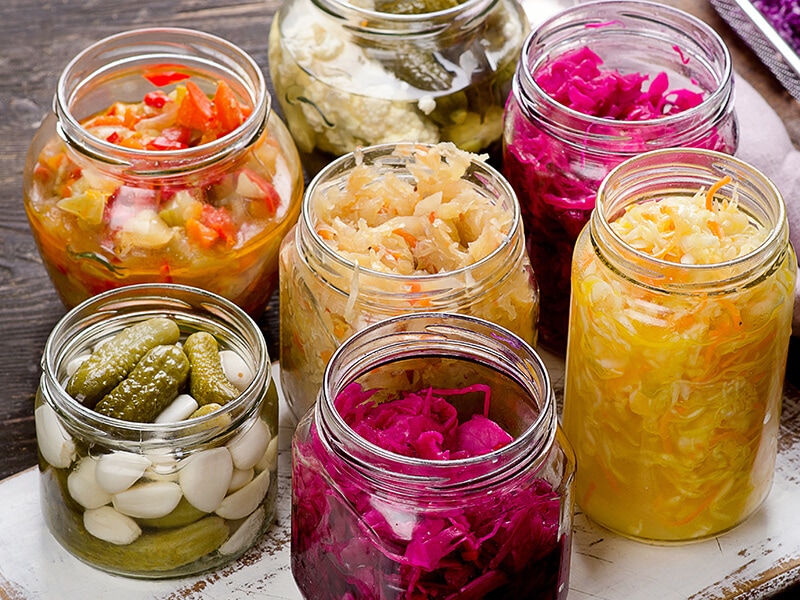
That’s not completely true, but some fermented foods do go through the fermenting process in brine, such as sauerkraut. It’s the reason many have confused fermented foods with pickles.
Differences
Despite their overlap, these methods still have different primary features, affecting the various results and beneficial attributes.
The table below will give you an overall view of how distinctive they legitimately are and help you figure out which one to choose more quickly.
Origin
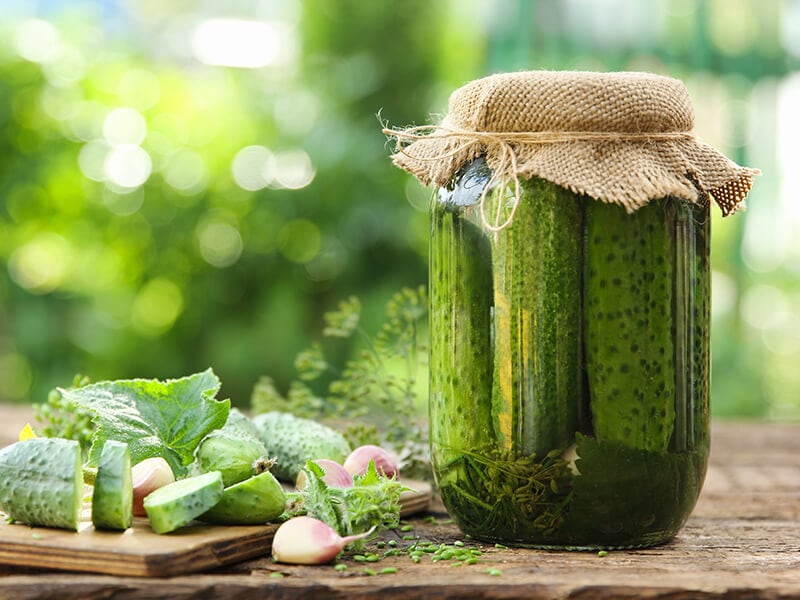
As I already mentioned, fermentation appears much sooner than pickling. While the first beer seemed to appear 13 thousand years ago, only in 2400 BC did people know how to make the first pickles with vinegar.
And while the main use of pickling at that time was to preserve foods, people applied fermentation to enrich their cuisine and reduce the cooking time.
A detailed explanation will help you understand more about the history of pickles.
Method Of Preparation
There is a big gap regarding how people prepare for these two methods. As for fermenting, it’s pretty simple. It mainly requires immersing your ingredients in brine and covering the container to ensure it stays air-tight.
Pickling is slightly more complex, as sometimes, you need to sterilize the equipment to prolong your foods’ shelf life. However, you can enjoy pickles sooner than fermented dishes since they only require several months to complete.
Temperature
One of the most significant differences between these two methods is how their foods react to temperature.
If you have tried making both, you’ll know fermented dishes are more sensitive to temperature. Since the fermenting bacteria can only grow at a specific temperature, you should keep these foods somewhere cool so that heat doesn’t fluctuate (preferably in the fridge).
In contrast, pickles don’t demand much regarding temperature, as they are often canned beforehand, making them shelf-stable. You can just store them at room temperature.
Suitable Foods
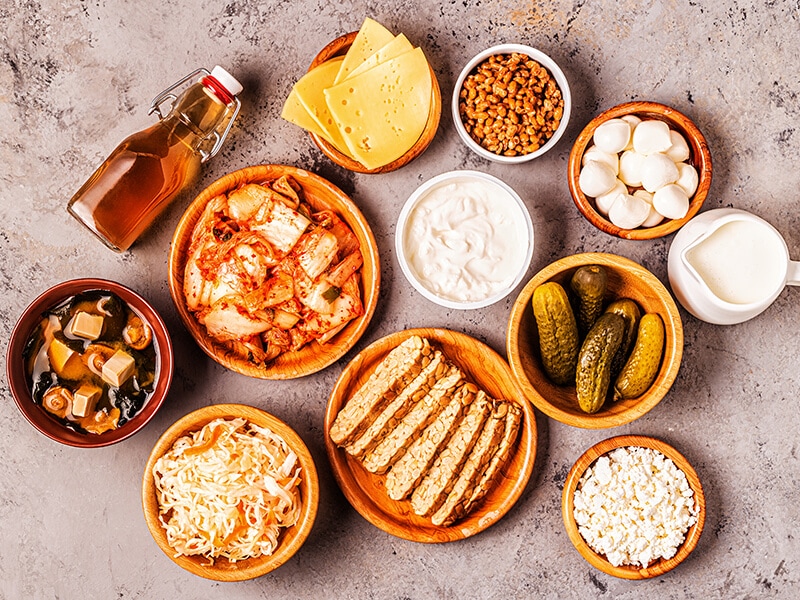
In terms of fitting ingredients, fermenting has more options than the other. Aside from foods, you can use this method to make various types of yogurts, beverages, or seasonings like sauces or pastes.
In contrast, pickled choices are slightly limited. You often meet pickles in the form of vegetables or fruits. Sometimes, people also pickle meat, fish, or eggs, but that’s mostly everything.
You’ll be surprised at how many foods you can ferment.
Flavor And Texture
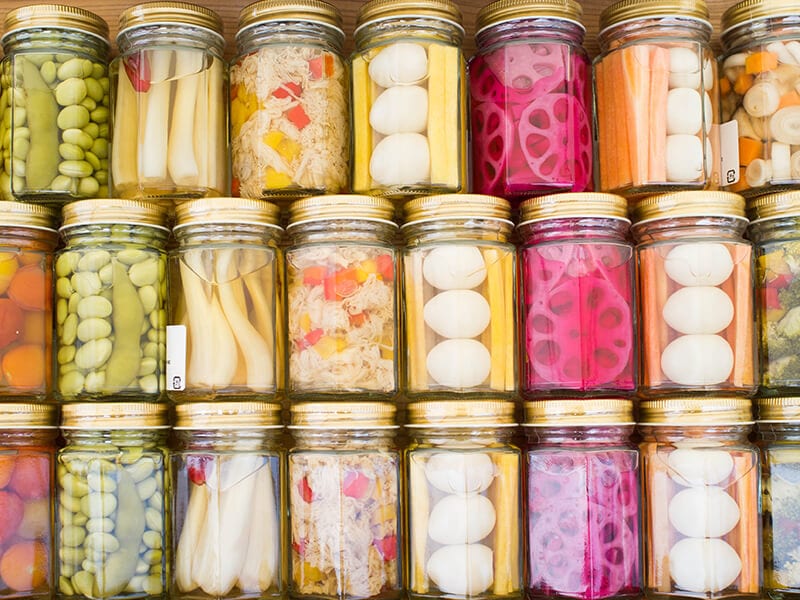
Although both methods make your foods tangier, not all results are identical. If you pay close attention, you’ll realize fermented dishes have more layers of complex flavors than pickles.
That also applies to texture, especially with vegetables and fruits. Since the pickling time is often shorter than fermenting, your ingredient will still keep its crispiness. Meanwhile, fermented foods are soft and easy to digest.
Health Benefits
Pickling is the inferior of the two methods since its sterilization process will eliminate some nutrients, especially the water-solute vitamins like B and C.
But you don’t have to worry about this problem with fermented foods. Since this process breaks down sugars and starches, it will reduce the calorie content, perfect for people wanting to lose weight.
Not to mention, fermentation also increases the number of probiotics in your ingredients, making it easier to eat and healthier for your gut.
Are Pickles Fermented Or Pickled?
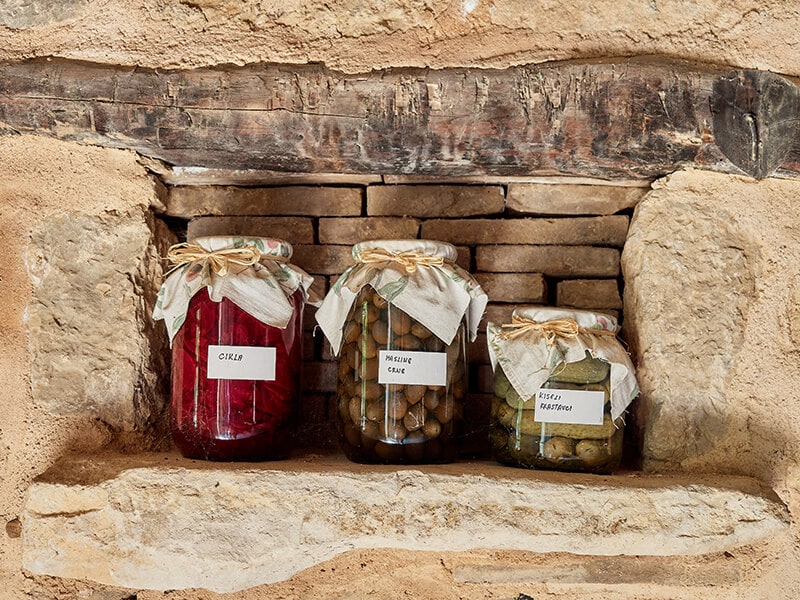
You may think the answer is obvious, but it can be more complicated than you thought. First, the pickles you usually see in grocery stores are 100% pickled since their brine contains vinegar or other acids.
However, pickles in farmer markets are mainly fermented beforehand. These products tend to be healthier and tastier than the usual pickles.
To identify them, check the label to see if there are some beneficial bacteria. One thing for sure is that fermented pickles won’t contain preservatives or dyes.
The surest way to have fermented pickles is by making them at home.
FAQs
Are you satisfied with all the information above? If not, don’t worry. I still have various exciting knowledge in the answers to these frequently met questions.
Now, You Can Easily Choose Between Pickled And Fermented Foods
People have misunderstood the concept of pickling and fermenting for a long time. And it’s time to end this misinterpretation. I hope this article has provided enough information so you won’t confuse these two products again.
Please introduce this post to your family and friends if you find it helpful. And feel free to comment all your concerns about this topic. I’d love to discuss them with you. Thank you, and see you in the following article!
References
- Pickling (2022) Wikipedia. Wikimedia Foundation.
- Fermentation in food processing (2022) Wikipedia. Wikimedia Foundation.

